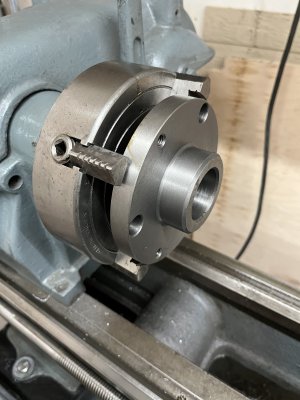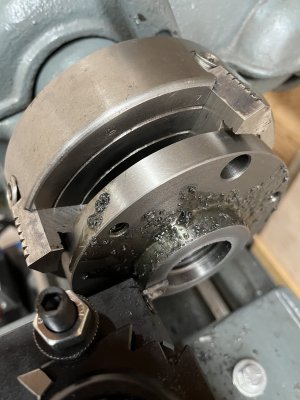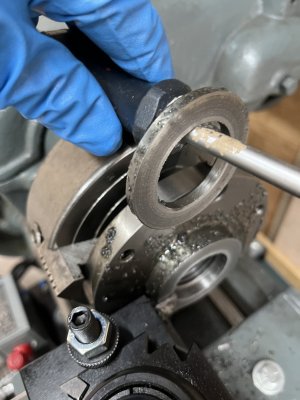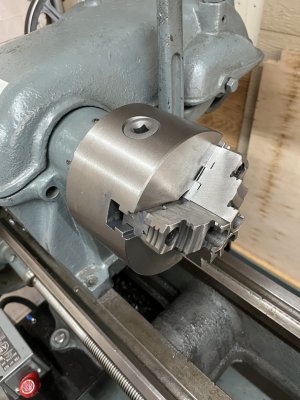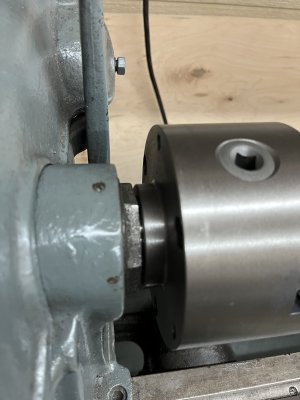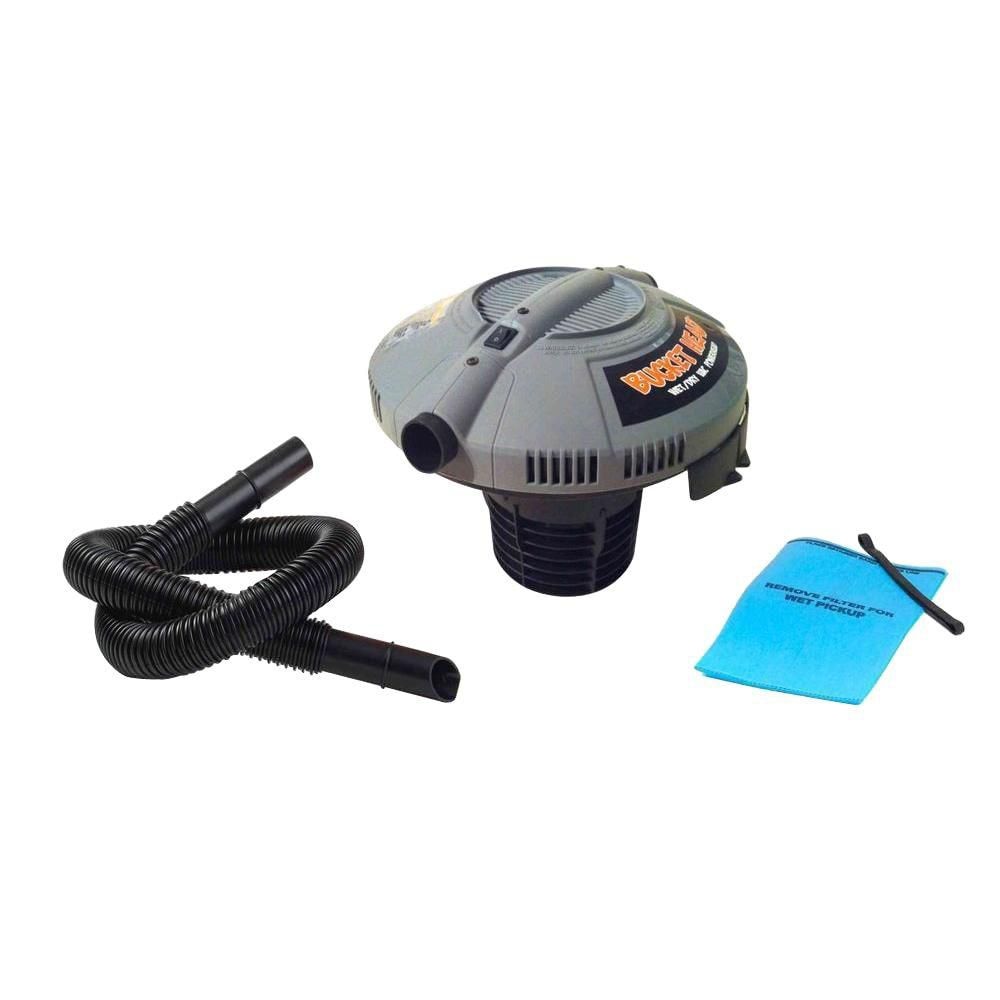I took some time over lunch to go over the 4-jaw. There was maybe .0015 difference in pinion height between a free running jaw and a binding jaw. Is that enough to cause binding? Maybe.
I stoned the inside the grooves in the sides of the jaws. I could tell there were high spots.
But there was a tiny ridge in the groove where the jaws ride in the chuck. Because the chuck isn’t hardened I used a file to remove the ridge and that made a tremendous difference.
So onward I go. Glad to see my speed at dialing in a 4-jaw hasn’t been lost. About a minute to get under half thou concentricity.
I was going to do this on the faceplate as @YotaBota did but when I tried to face the faceplate my HSS bit was instantly destroyed. Not sure what why as it seems the faceplate would be cast iron.
I stoned the inside the grooves in the sides of the jaws. I could tell there were high spots.
But there was a tiny ridge in the groove where the jaws ride in the chuck. Because the chuck isn’t hardened I used a file to remove the ridge and that made a tremendous difference.
So onward I go. Glad to see my speed at dialing in a 4-jaw hasn’t been lost. About a minute to get under half thou concentricity.
I was going to do this on the faceplate as @YotaBota did but when I tried to face the faceplate my HSS bit was instantly destroyed. Not sure what why as it seems the faceplate would be cast iron.

